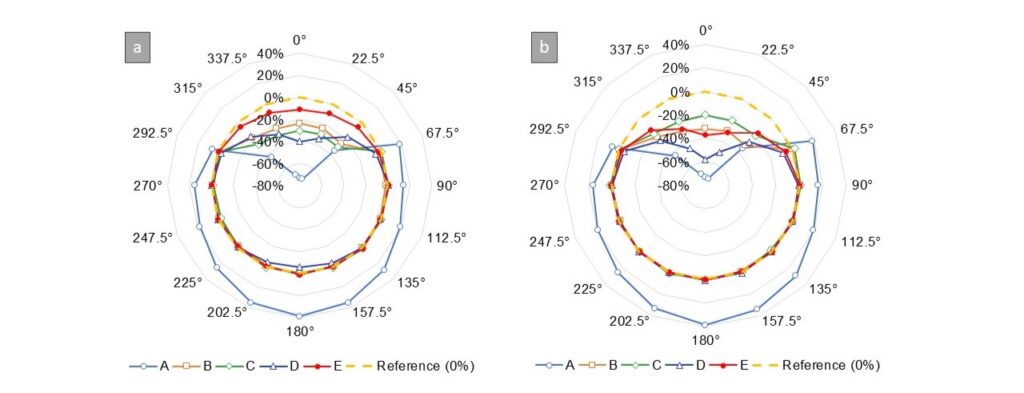Material & Method :
Five CT scanners installed in four radiology services were evaluated: Siemens Somatom Go Top, GE (Revolution CT and Revolution Maxima), Canon (Aquilion Genesis, and Aquilion Prime). Measurements were performed using two head protocols on a HEAD16 phantom (16 cm diameter, PMMA): a “standard” protocol to compare the devices with each other and a “clinical” protocol used in routine practice. To quantify the dose reduction obtained using the OBTCM tools, the scintillating fiber detector IVInomad, was placed on the inner part of the gantry at 16 measurement positions, placed all around the gantry (see Figure 1). Image quality was evaluated using standard metrics (SD, SNR, NPS) on the HEAD16 phantom images on four regions of interest, positioned in pairs respectively on the anterior and posterior parts of the phantom. Statistical analysis was performed (Wilcoxon test, Bland-Altman) on the measurements obtained with and without the OBTCM tools to evaluate the significance of image quality differences.

Figure 1: Schema of the dose measurement protocol. Dots represent the 16 measuring points using the IVInomad detector.

